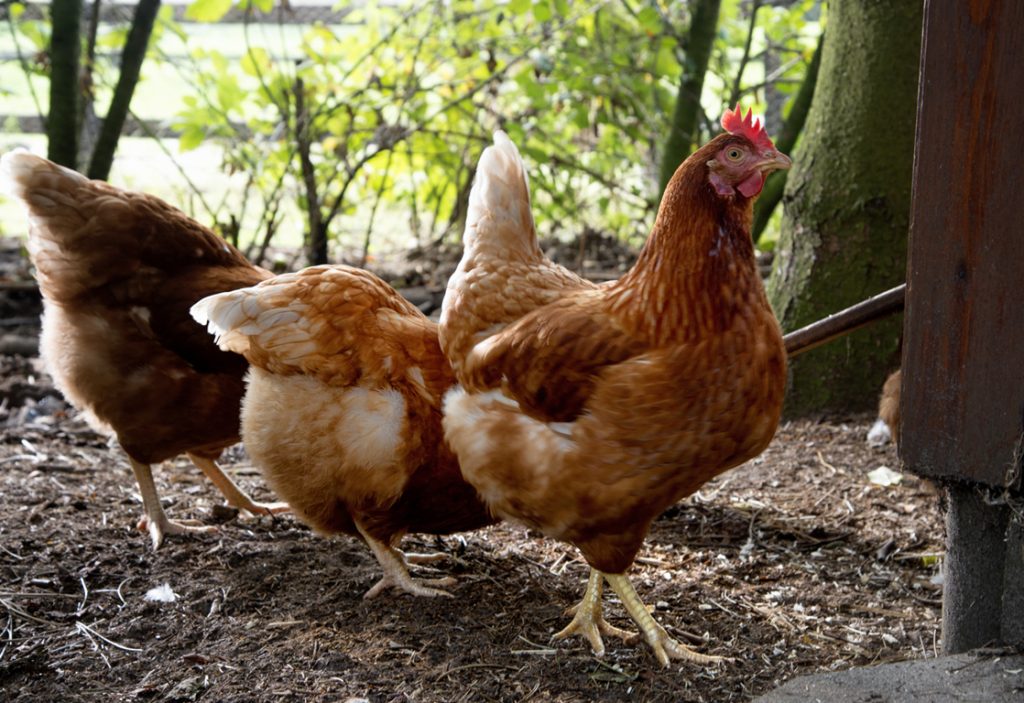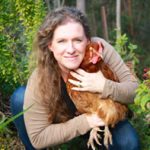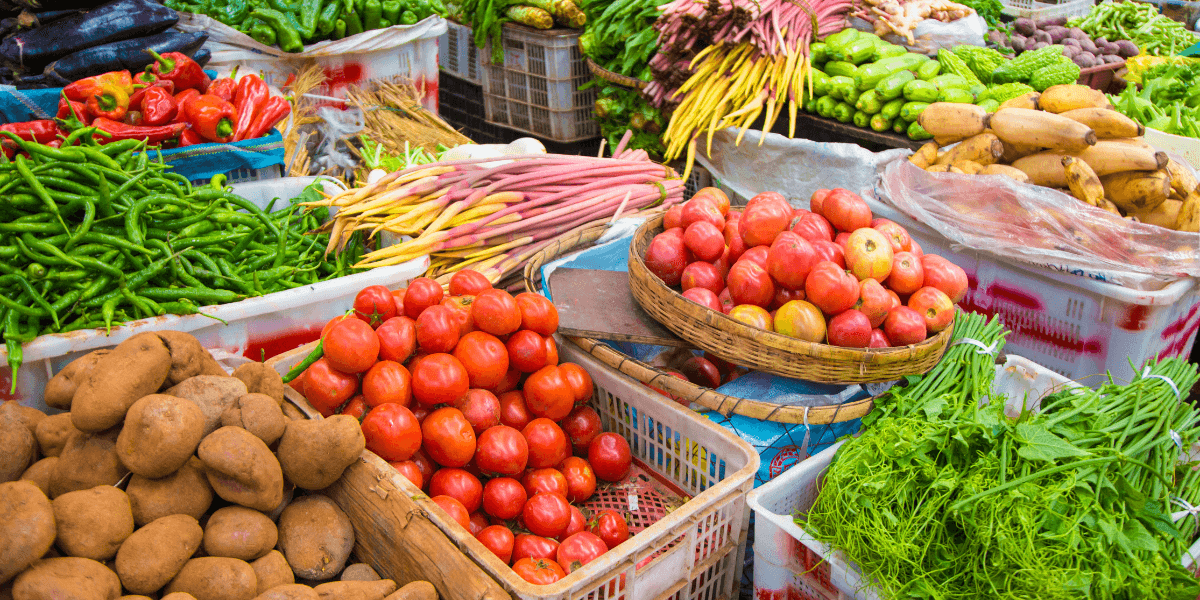DIY PROJECTS
KEEPING BACKYARD CHICKENS: GETTING STARTED
So you’ve decided to embark upon the journey of keeping backyard chickens. Good on you! We have our resident chook expert Claire Bickle to tell you everything you need to know about getting started.
There are many benefits to keeping poultry in urban spaces, which include:
- Fresh eggs that haven’t been sitting on the grocery store shelf
- Never-ending supply of fertiliser (composted chicken manure is a fantastic resource for the garden)
- Natural pest and weed control
- Cruelty-free, natural eggs
- Rescue food waste by giving kitchen scraps to your hens
- Educational value by showing your little ones that eggs come from chickens, not cardboard boxes
- Reduce food miles and your carbon footprint when you’re walking to your backyard to collect eggs
- Mental health benefits by getting outside and spending time in the garden.
But before you rush out and buy 10 chooks, there are a few things that you need to consider and organise beforehand.

1. COUNCIL REGULATIONS
No matter which council region you’re located in, there will be regulations. Most councils will not permit the keeping of roosters in built-up urban areas. Some of the Brisbane City Council regulations and requirements include:
- Household premises with a total area of more than 800sqm can keep up to 20 fowl (domestic bird) without a permit. That includes ducks, geese and peacocks.
- Less than 800sqm you can keep up to six fowl and poultry sheds must be at least 1m from a dividing fence.
You must also make sure:
- your poultry shed doesn’t cause a nuisance to your neighbours
- you keep conditions clean to prevent odour and flies, such as gathering up manure and placing in a fly-proof compost bin.
- to store bulk feed in vermin-proof containers
- avoid putting out excess food which can attract rats and mice
- consider using lime to combat odour problems and increase soil pH.
- to replace water daily.

2. HOUSING
Whether you choose to have a permanent coop with a run or a mobile chicken tractor-style set up, there are some very important guidelines that need to be followed.
Predator proofing
To keep predators out the coop needs to have small heavy gauge aviary wire on the coop door, and windows if applicable. There must be wire in any of the ventilation gaps in ceiling section. Predators to watch out for are snakes, foxes, feral cats, goannas and even domesticated animals can be a concern.
The floor should be solid in non-movable night coops (cement pavers or concrete slab). With movable poultry tractors I advise having the night section secure where they roost or even moving the entire housing onto a solid surface each evening.
Ventilation
This is very important in out warmer months and can be achieved by having openings/windows in appropriate locations in the coop. A gap around the ceiling will also help hot air to escape and draw cool air up from below.
Run/yard
This is for daily exercise if your birds are not free ranging all the time. The area needs to be a minimum of one square metre per bird; I recommend two square metres per bird. The run fencing can be dug into the ground about 30cm to prevent predators such as foxes digging in. I also recommend having the run at least 180cm high for ease of access to the night house and even consider chicken wire across the roof of yard area too. This will prevent fowl getting out and wild birds and predators getting in.
Protection from weather
Poultry need to be protected from weather extremes, so placement of the hen house is important along with design aspects for ventilation, roofing and so forth. Dappled sunlight I find best. A position under trees if possible is ideal and deciduous trees are a great choice, so that there is warm winter sun but summer shade provided.

3. FEEDING YOUR CHICKENS
Chickens like all animals need a good balanced diet of minerals vitamins, protein and carbohydrates.
The easiest way to give your poultry all this nutrition is to buy a commercial ready-to-go poultry feed. There are quite a few bagged options available at produce stores such as layer pellets, layer mash, fine layer mash and mixed grains. You also need to ensure that the poultry feed you choose has a decent protein percentage – at least 17%, because protein is essential for good egg production.
Poultry also need a range of greens in their diet to give them all the essential vitamins, particularly Vitamin A because this is what gives the yolks that vibrant yellow colour. Great greens to grow are comfrey, chicory, dandelion, chickweed, sorrel and silver beet. Even free ranging will allow chickens to pick on grass and a range of weeds.
Shell grit is also important in adding calcium to their diet to help form good strong eggshells but it also aids with digestion. Most commercial poultry feeds will have shell grit already added to their mixes.
Clean, cool fresh water must be available at all times.

4. CHOOSING A CHICKEN BREED
Just like when choosing a dog breed that suits your family’s needs, the same goes for chickens. Are you a large family of egg eaters? Are you looking more for backyard pets, garden workers and manure producers?
The hybrids will lay lots and lots of eggs but only for two to three years before quantities will rapidly decline. Good pure bred poultry breeds will lay a great amount too, not quite as much as the hybrids but they will lay for longer, more like four to five years before a slow decline in egg production.
Pure breeds that are good egg layers include Australian Langshan, Australorps, Araucana (blue eggs), Leghorns, Ancona, Rhode Island Reds and New Hampshire. There are dozens of other breeds to choose from and many will lay more than enough for the average family. Many are available in a bantam size for those with smaller backyards.
COSTS AND BENEFITS
There are so many benefits to keeping a few chooks in your backyard, it’s not always about the bottom line and eggs.
You will save money by not having to buy as much fertiliser for the garden, pest sprays, and pay for garden labour. You will also save money by not having to buy 100% certified organic eggs, which can cost over $8 per dozen from supermarkets. There’s also the environmental savings (fewer fossil fuels, less impact on the environment and transport costs, free range chickens), which we can’t put a dollar value on.
There’s no set amount for what the cost of ‘setting up’ with chooks will be as there are so many choices, which means you get to choose a set up to suit your budget and lifestyle:
- Coop / housing: homemade with recycled materials for free, or bought ready-made for up to $1,000.
- Drinks and feeders: one-off cost of $20-$150.
- Feed: this will be a continuing cost. Buying a bulk all-round feed can be $20-$30 per 20kg bag. You can supplement your chicken’s diet by allowing them to free-range, or growing your own meal worms and additional greens.
- Chickens: you can purchase ex-battery hens for $5 each, or purebred point of lay for $30-$70.
- Bedding: this will be another ongoing cost. Grass clippings and leaf litter will be free, or you can purchase hemp bedding / straw / wood shavings for $15-$20 per compressed bale.
- Vet bills and medication: this is a possible cost you should take into consideration before embarking on the chook keeping journey.

The author
Clare Bickle
Claire Bickle is a qualified Brisbane based horticulturist, having a Diploma in Horticulture and an Advanced Design Certificate in Permaculture Design. She has worked in multiple areas within the horticultural industry for over 20 years. She is currently the president of The Horticultural Media Association of Qld. Claire enjoys delivering Sustainable Living Seminars for the Brisbane City Council, being a guest speaker at many different Queensland gardening events and expos, presenting on the ABC612 radio – Chook Talkback and Gardening Talk back, presenting on the community tv gardening show Blooming in Brisbane and writing for many horticultural and sustainability publications such as, Earth Garden & Good Organic Gardening.








